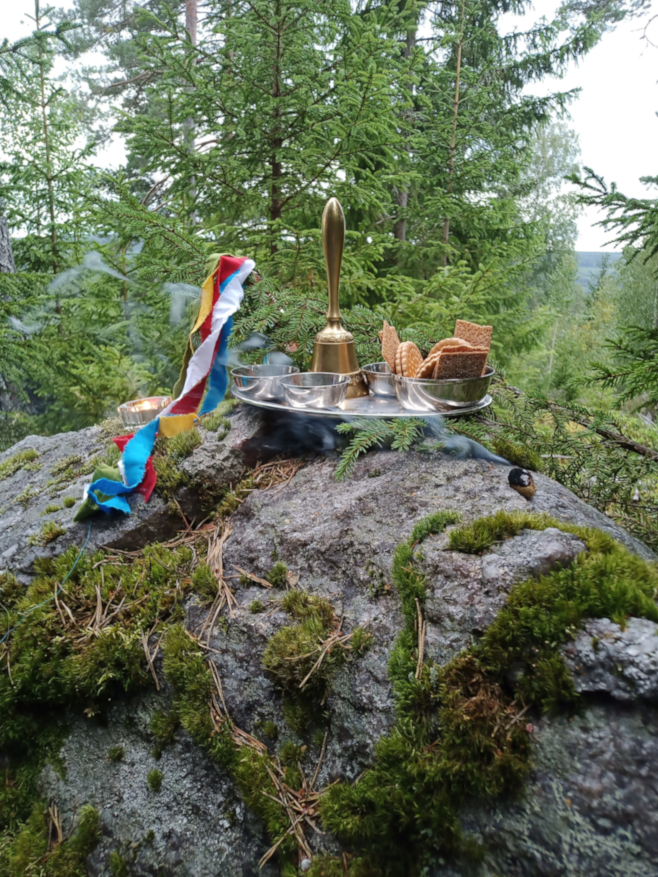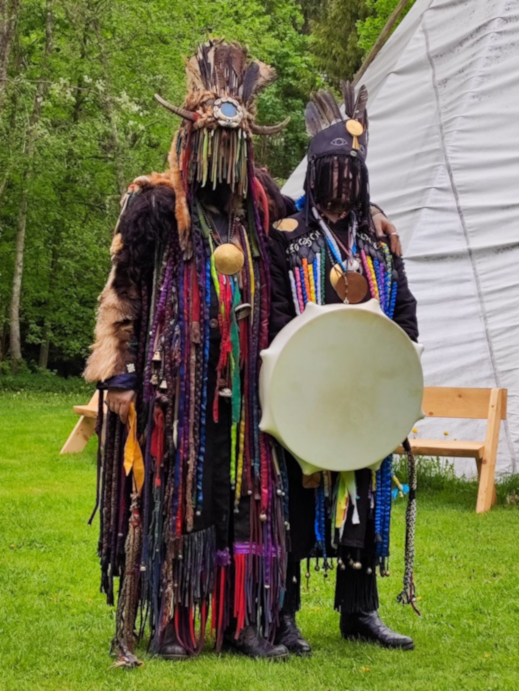


Shamans and traditional shamanism
Shamanism is the oldest worldview on earth. It is the first method of connecting with the spirits and the divine. Shamanism is an ancient wisdom that provides access to the sacred powers, without books or prophets. The shamans themselves are prophets of their reality.
Shamans are primarily at the service of their community. They also attach great importance to personal development. The results of this self-exploration then aid the shaman in shaping their reality.
For simplicity we use the term shaman, which also means shamaness. The term is used gender neutrally here.
A shaman is a healer, a mediator and a magician. This means that he ensures the healing of people on a physical, psychological and energetic level. He mediates the world of spirits and brings information from there to the world of the living. The shaman is also a magician who can influence reality, but cooperation with the spirits is crucial for that. A person’s free will also has a central role.
Of course, the shaman is also a therapist, he can be a storyteller, an astrologer, an artist and a musician, but the basic principles behind it are always those mentioned above.
Shamanism developed on all continents in archaic prehistory. We find similar practices in America, Europe, Australia, Africa and throughout Asia. But the practices and the different directions differ, sometimes greatly.
The term shamanism was coined not so long ago by cultural anthropologists and all such practices in the world were lumped into one box.
When we (Spirit of Wolf) talk about shamanism, we refer to the classical direction from the inner Siberia.
This is where the word “Shaman” originally comes from and where the practices exist partly unchanged and uninfluenced by modern religions.
The Spirit of Wolf tradition originates from Khakassia/Siberia. The Tuvan (Tuvinian) tradition is also an important influence. The tradition is said to be several thousand years old, but it has always adapted to circumstances, so it is still alive and spreading again.
There was a time when shamans were politically persecuted, also for religious reasons. During this time the flame was kept underground and passed on secretly. After the era of shaman persecution was over, shamanism was able to resurface and the shamans were able to work more or less unhindered.
The Spirit of Wolf tradition is largely uninfluenced by ideologies, that is, there is a direct connection to the sacred forces of nature and the cosmos. This connection can be established anywhere in the world using the methodology. Everyone connects with their own roots in their own country.
In Europe, the line of shamanic tradition has been cut off, but there are many prehistoric cult sites where traces of the ancient shamanic peoples can be seen. For example in Val Camonica, Italy (the Valley of the Gods), where you can see 250,000 petroglyphs, some of which are very similar to the shamanic petroglyphs in Siberia.
Even the ritual clothing found is very similar to that of the Siberian shamans. One can assume that the practices are very related, or even one and the same.
Also, the practices of Scandinavian traditions have many similarities with the wolf tradition. So we are talking about a Eurasian tradition that has always evolved and continues to evolve to this day. The task of shamans in Western countries is to restore the connection with the primordial ancestors through the practices of the living tradition and to establish a new line of shamans. This is already happening and the tradition is already being passed on to future generations.
A special difference with other traditions is that we do not use psychoactive substances, because we do not need them.
Instead, we use the concept of “alter ego”, and shamanic attributes such as drumming and singing.
In the Spirit of Wolf tradition, practitioners who required substances to enter a trance were considered weak. They were often banished from the shamanic community.
Nowadays we see this more loosely, anyone can use these things privately if they have the expertise, but completely separate from the Spirit of Wolf practices.
The purity of the tradition is very important to us; elements of other directions should not be mixed in the rituals.
A dual tradition is possible, but one can easily get lost and confused there. This can lead to massive psychological disorders. So in the beginning you focus your attention on one movement.
In addition, dual
tradition can create inner conflicts because there can be an egregor battle
between the two directions.
Egregor is something like a group mind. Of course, you will also make much faster progress if you focus on one movement.
Text: Morsuk Kam, head shaman and teacher of Spirit of Wolf
